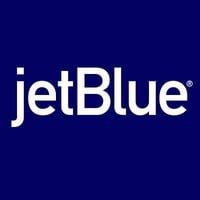Company Cyber Security Posture
NANA
NA Company Details
NA
NA
NA
NA
NA
NA
Scan still pending
NA
NA
Between 200 and 800
This score is AI-generated and less favored by cyber insurers, who prefer the TPRM score.
 NA Global Score
NA Global Score.png)

Company Scoring based on AI Models
| Model Name | Date | Description | Current Score Difference | Score |
|---|---|---|---|---|
| AVERAGE-Industry | 03-12-2025 | This score represents the average cybersecurity rating of companies already scanned within the same industry. It provides a benchmark to compare an individual company's security posture against its industry peers. | N/A | Between 200 and 800 |
Company Cyber Security News & History
| Entity | Type | Severity | Impact | Seen | Url ID | Details | View |
|---|
Company Subsidiaries

NA
Access Data Using Our API

Get company history
.png)
NA Cyber Security News
General air cargo in decline as China-US e-commerce boom slows
Airlines prioritized surging e-commerce shipments on trans-Pacific and Asia-Europe routes over the past few years at the expense of general ...
China-US air freight tumbles on 'de minimis' tariff; airlines adjust routes
SCRAMBLE. Operators flew 26% less freight capacity from China and Hong Kong to the United States between the May 2 "de minimis" suspension and ...
Air cargo faces $22B revenue hit when China tariff exemption ends
The air cargo industry could see revenues cut by billions of dollars and China-US air rates plunge by 30% or more when the Trump ...
Analysis-China-US air freight tumbles on 'de minimis' tariff; airlines adjust routes
SEOUL (Reuters) -Air freight capacity between China and the U.S. dropped by almost a third after a tax-free exemption for low-value items ...
Cyber threats to rail, ports, airports could cripple US military mobilization, FDD report warns
A new report from the Cyberspace Solarium Commission reveals that U.S. adversaries are aware that targeting critical infrastructure through ...
Air freight groups and airlines rush to increase flights out of China
Air freight groups and airlines, which only recently cut flights to China amid weak tourist demand, are scrambling to reroute planes and ...
News Tech advances leave ship systems cyber-vulnerable, says DNV
A lack of interconnected shipboard equipment is making shipping a difficult target for cyberattack – but this situation is changing as ship systems are ...
Chinese-made cargo equipment enables cyber, espionage risks in US ports, congressional probe finds
A year-long probe led by GOP members of two House panels found that numerous seaports around the U.S. contain technology originating from ...
Investigation by Select Committee on the CCP, House Homeland Finds Potential Threats to U.S. Port Infrastructure Security from China
A joint investigative report exposing a rising threat to US economic and national security posed by the Chinese Communist Party (CCP).

NA Similar Companies

SAUDI AIRLINES
At Saudia Group, we're on a mission to inspire people to go beyond borders. Our purpose is rooted in unlocking human potential and connecting the world in ways never thought possible. We are committed to reshaping the aviation ecosystem in our region and beyond, by embracing innovation and a custome

Iberia
Iberia is Spain’s number-one airline group and the leader in the Europe-Latin America market, with the single greatest array of destinations and flight frequencies. Together with British Airways, we’re part of the IAG Group, with the third-highest receipts in Europe and sixth worldwide.. Iberia is a

Turkish Airlines
Turkish Airlines has soared to new heights since its first flight in 1933, becoming the airline that connects more countries than any other. Our commitment to excellence is reflected in the world-class service, comfort, and innovative travel experience we offer, designed to elevate every journey.

JetBlue
When JetBlue first took flight in February 2000, our founding goal was to bring humanity back to air travel, and over two decades later, we still put our customers, crewmembers and communities at the center of everything we do. Before we even had aircraft to fly, our founders selected five values

Menzies Aviation
At more than 200 airport locations across 6 continents, we offer landside and airside services tailored to our customers’ needs; timed to their schedules; and delivered by teams with the knowledge, tools and passion to set standards rather than chase them. Our core services include; Ground Handling

Shenzhen Airlines
Shenzhen Airlines was founded in November 1992 and started its service on September 17th, 1993. It is a joint-stock Airline Company specializing in air passenger, cargo and mail transportation and now it is China's 5th biggest carrier. Shenzhen Airlines has managed more than 95 aircrafts by Jan, 201

Frequently Asked Questions
Explore insights on cybersecurity incidents, risk posture, and Rankiteo's assessments.
NA CyberSecurity History Information
How many cyber incidents has NA faced?
Total Incidents: According to Rankiteo, NA has faced 0 incidents in the past.
What types of cybersecurity incidents have occurred at NA?
Incident Types: The types of cybersecurity incidents that have occurred include .
Additional Questions
What Do We Measure?
















Every week, Rankiteo analyzes billions of signals to give organizations a sharper, faster view of emerging risks. With deeper, more actionable intelligence at their fingertips, security teams can outpace threat actors, respond instantly to Zero-Day attacks, and dramatically shrink their risk exposure window.
These are some of the factors we use to calculate the overall score:
Identify exposed access points, detect misconfigured SSL certificates, and uncover vulnerabilities across the network infrastructure.
Gain visibility into the software components used within an organization to detect vulnerabilities, manage risk, and ensure supply chain security.
Monitor and manage all IT assets and their configurations to ensure accurate, real-time visibility across the company's technology environment.
Leverage real-time insights on active threats, malware campaigns, and emerging vulnerabilities to proactively defend against evolving cyberattacks.




